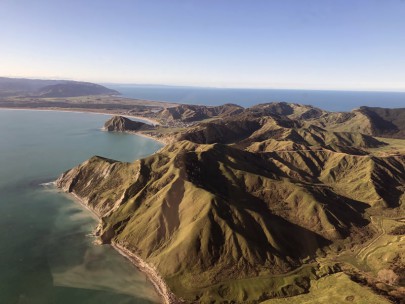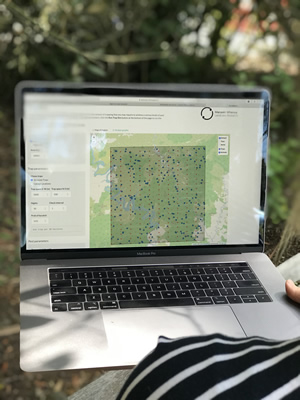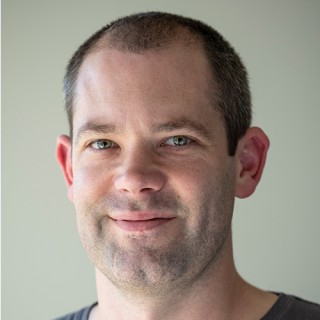Modelling complex eradication scenarios: predicting possum eradication success for Whakatipu Māhia – Predator Free Māhia
However, given the range of tools available to managers, one-size-fits-all eradication plans are difficult to design. Managers need to be able to adapt plans to take advantage of local geography and emerging technologies, and make the best use of available resources. Therefore, managers require flexible tools that can test proposed eradication programmes and determine the likelihood of eradication success.

Māhia Peninsula
Predator Free Hawke’s Bay, Hawke’s Bay Regional Council, HBRC) released an operational plan, launched as Whakatipu Māhia, for eradicating possums from 14,500 ha on Māhia Peninsula. The project has the goal of eradicating possums over Māhia Peninsula and maintaining them at zero density by the end of 2021. The project aims to take advantage of the Peninsula’s geography, using a rolling front of treatment blocks starting at head of the Peninsula to reduce reinvasion rates, and create an immigration barrier across the neck of the Peninsula to prevent reinvasion from uncontrolled areas. The benefits of using the geography are contingent on preventing reinvasion, so an assessment of the effectiveness of the rolling fronts was undertaken by Manaaki Whenua.
The wildlife ecology team at Manaaki Whenua has several tools that managers can use to test these types of questions. The first tool, TrapSim (an online tool to help managers decide on a trapping regime, Kararehe Kino 32; https://landcare.shinyapps.io/TrapSim/) is a hands-on ‘ready reckoner’ that managers can use to test eradication programmes, by altering trap numbers, trap spacing, duration and effectiveness. TrapSim is especially useful for quickly assessing the trapping effort proposed to achieve eradication within each treatment block and for confirming that the proposed trap spacings and trap nights can achieve eradication. However, the TrapSim model simulates single treatment areas that are closed to migration, making it less suitable for modelling multiple treatment areas with mobile animals. An improved tool, the Agent Based Model (ABM), developed by Audrey Lustig during her postdoctocal research with the University of Canterbury, is designed to model migration between treatment areas, and differing control methods and timing between areas. The ABM model simulates spatially explicit sub-populations, including birth, death and migration processes to more fully represent population responses to control. This makes the model well suited to simulate scenarios like the Whakatipu Māhia project.
The ABM was applied to the control scenarios proposed for the Whakatipu Māhia project using existing estimates of current possum densities, carrying capacity and home range parameters, and each scenario was run for 500 simulations. A no-control scenario was simulated to establish a baseline for the possum population. A total carrying capacity of 21,105 possums (1.44 per hectare) was estimated for the eradication area, and simulations showed that without control possums could readily spread between habitat patches across the area.

TrapSim model: an online tool to help managers decide on trapping regime (trap numbers, trap spacing, trapping duration and effectiveness).
Under the control scenario, the ABM estimated strong declines in possum abundance, including eradication in over 90% of simulations for the first phase of the project covering 5,500 ha at the southern end of the peninsula. Importantly, the ABM estimated that possum eradication during the second phase of the project (a 9,000 ha area) was highly unlikely. Modelling was able to identify control blocks likely to contain remaining possums after treatment, and a scenario which doubled the effective traps nights in these blocks, from 28 to 56, estimated further reductions in the possum population but little likelihood of achieving eradication.
The ABM simulates each sub-population over time, which means it can track which sub-populations are likely to remain after control and where these animals are likely to spread. In Whakatipu Māhia, this revealed that population recovery after failed eradication was predicted to follow a consistent pattern. Dispersal from adjacent non-controlled blocks facilitated the recovery of recently controlled areas. However, this exchange between blocks was spatially limited and suggested that dispersal between control blocks could be managed, for example by using a buffer of traps or bait stations while eradication was underway.
Based on these results the HBRC approached Manaaki Whenua to further develop possum eradication prediction to guide the development of a control network that could achieve eradication across the entire Peninsula. Control-tozero density of possums was feasible if buffers of bait stations around high-density possum control blocks and across the neck of Māhia Peninsula are used to limit immigration from untreated areas. The model also showed that possum density at the edge of the eradication area has a very low effect on the suppression of possums in the eradication area and did not compromise the effectiveness of the eradication programme. This is not surprising as the eradication area takes advantage of the geography of the Mahia Peninsula, with a lagoon and settlement at the neck of the peninsula creating an effective natural barrier to pest immigration from uncontrolled areas. Reinvasion is likely to occur in the three years following suppression in the absence of an immigration barrier at the neck of the Peninsula.
The trappability parameters (probability of detection/capture and spatial decay in the probability of detection/capture) appear to be particularly important in determining the level of trapping effort (trapping duration and strategy) needed to achieve eradication. In particular, small inter-individual variation in the detection/capture probability can quickly hinder the efficacy of the management scenarios tested. Passive control that relies upon possum investigation and contact with the control device may fail to sample individuals that are less active or too wary to approach such devices. Active control methods (such as that proposed in stage 2 of the Whakatipu Māhia eradication programme) may be particularly useful to target survivors with a low trappability. This work was supported by funding from the Strategic Science Investment Fund, Ministry of Business, Innovation and Employment, Predator Free 2050, and Predator Free Hawke’s Bay.
